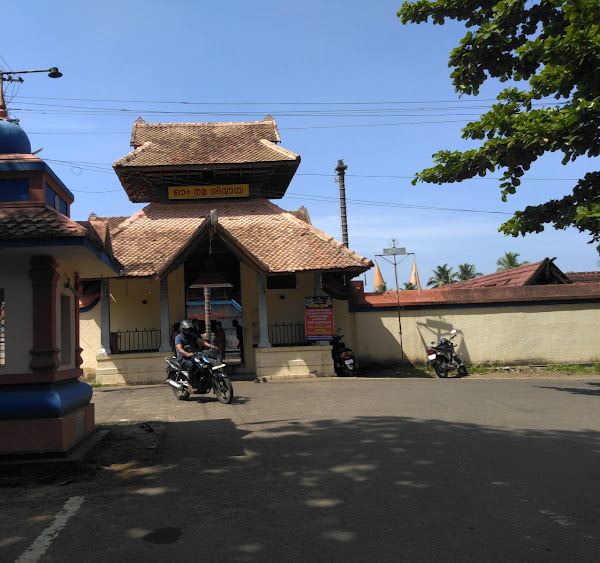Vazhappally Maha Siva Temple- Kerala

Address
Vazhappally Maha Siva Temple- Kerala
Deity
Shiva Amman: Parvati
Introduction
- Name: Vazhappally Maha Siva Temple
- Location: Vazhappally, near Changanassery, Kottayam District, Kerala, India
- Administration: Managed by the Travancore Devaswom Board
- Historical Significance: Believed to be constructed by the first Chera king of Kodungallur, with the installation of the idol of Lord Mahadeva (Shiva) attributed to Lord Parasurama.
- Temple Features: One of the few temples in Kerala with two Nalambalams (four-walled structures surrounding the sanctum) and two flag masts. It also contains 17th-century wood carvings (daru silpas) and has a Vattezhuttu inscription dating back to Kollam Era 840 (1665 AD).
Puranic Significance
- Foundational Legends:
- Built during the time of the 1st Chera King Dynasty, Kerala is believed to have been created by Lord Parasurama, who installed the idol of Lord Mahadeva.
- The temple’s origins link to a narrative where the Neelamperoor Shiva Temple was to be converted into a Buddhist monastery. The ten Brahmin families (known as Pattiyillam Pottimar) reportedly relocated to Vazhappally after attempting to shake the Shiva Linga from Neelamperoor.
- The Shiva Lingam brought from Neelamperoor was initially placed at the north part of Vazhappally. Unable to shake the Linga, the grieving Brahmin family received a divine appearance from Parasurama, who gifted them a new Shiva Linga and instructed them to construct a temple based on the Ardhanariswara concept.
- The temple was built with the sanctum sanctorum positioned in a way that the Shiva Linga is to the east and the Parvati idol to the west. Deities Dakshinamoorthy and Ganapathi were also installed within the sanctum, facing south.
- Historical Developments:
- Following the decline of the Cheras, the temple witnessed control under several rulers, including the Thekkumkur and Travancore kings, and endured numerous conflicts and upheavals. However, it remained intact due to divine intervention and the faith of devotees.
- A significant incident involves Chera king Palli Bana Perumal, who, after a defeat, sought to install his personal idol at Neelamperoor but was thwarted by local leaders who then established the idol in Vazhappally.
- The temple administration was historically managed by ten Brahmin families from Neelamperoor, lasting until the late 17th century. Their legacy includes notable families like Changazhimuttom, Kainikkara, and others, which played key roles in temple rituals and governance.
- Inscription and Renovation: The Vazhappally inscription is one of the oldest in Kerala and is associated with the second emperor of the Kulasekhara dynasty, Rajasekhara Varman. He is linked to efforts to renovate the temple and is mentioned in the Periyapuranam.
- Cultural Practices: Historical accounts highlight how local Brahmins installed a Brahma Rakshas in the temple as a form of appeasement after conflicts. This included the establishment of a hanging tree and other rituals that were later discontinued.
Special Features
- Unique Architecture: The temple is notable for having two Nalambalams and two flag masts, which is rare among Kerala temples.
- Idol: The idol of Lord Shiva worshipped here is considered centuries old, adding to the temple’s historical value.
Festivals
- Annual Festival: A significant ten-day festival is celebrated in the Malayalam month of Meenam (mid-March to mid-April), drawing devotees from near and far.
Century/Period/Age
1st century.
Managed By
Travancore Devaswom Board.
Nearest Bus Station
Vazhappally
Nearest Railway Station
Changanassery Station
Nearest Airport
Kochi









